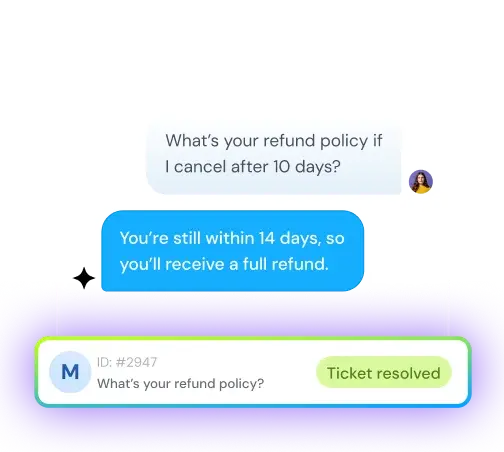Customer service examples to know in 2025: 7 real lessons from top brands
Sneha Arunachalam
Jun 26, 2025
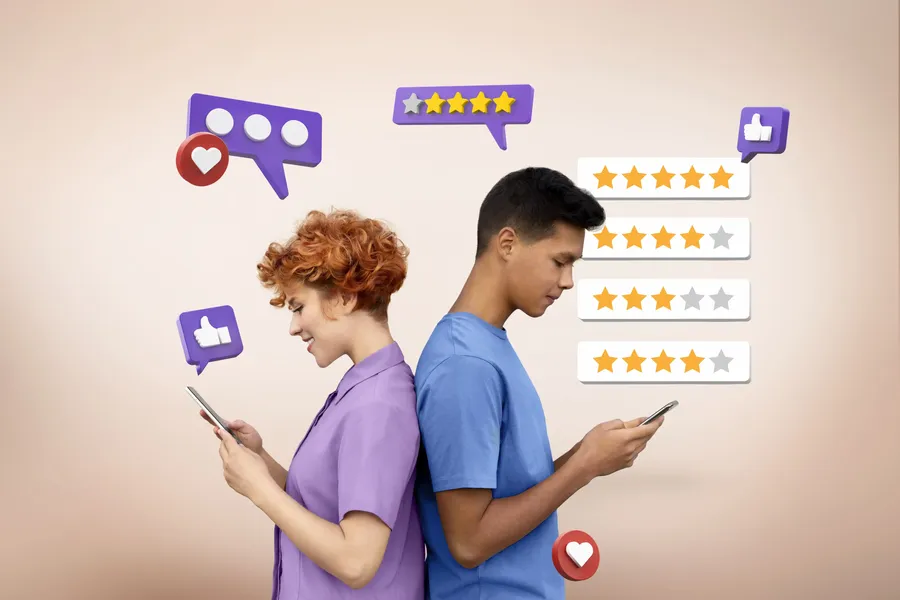
A lot of businesses are dropping the ball when it comes to customer care. And it’s not just a hunch; the numbers make it painfully clear. A full 62% of consumers feel like companies just don’t care enough about them. That disconnect? That’s your opportunity. If you can close that gap with genuine, thoughtful service, you’ll stand out fast — and stay top of mind.
Here’s the thing: customers don’t just want low prices anymore. What they really want is to feel seen, heard, and valued. In fact, 76% of people say they’re more likely to stick with businesses that make their experience feel personal, even if it costs a bit more. That very first interaction? It sets the tone for everything that follows — and it’s either building loyalty or pushing people away.
In this article, we’ll break down some standout customer service examples — real wins from brands that get it right. You’ll see what works, why it works, and how to bring the same principles into your own business, no matter your size or industry. Whether you’re running solo or leading a growing support team, these examples will give you a clear blueprint for turning everyday service into a competitive edge.
Why customer service is the new differentiator
Customer service isn’t just one department anymore — it’s the heartbeat of your entire brand. And customers are paying close attention. 80% of them now say the experience a company provides is just as important as the product or service itself. That first touchpoint? It sticks, for better or worse.
And the stakes? Higher than ever. When you get it right, 88% of customers will come back for more. But one misstep? You could lose them. 59% say they’ll walk away after several bad experiences, and that number’s been climbing. It’s not just about a private complaint anymore — one frustrated post can spiral across social media and impact how thousands see your business.
The upside? Great service has become a serious growth lever. It’s a way to:
- Build loyalty that lasts through price hikes and market shifts
- Spark word-of-mouth (which, by the way, 75% of customers say they’ve done after a great service experience)
- Increase lifetime value without spending more on marketing
- Stand out in saturated markets where everyone offers the same stuff
As one recent Forbes piece put it, “Taking a customer-first approach has almost become mandatory if you’re looking to sustain and build a successful brand.” And they’re not wrong.
What customers expect in 2025 (and why you need to catch up)
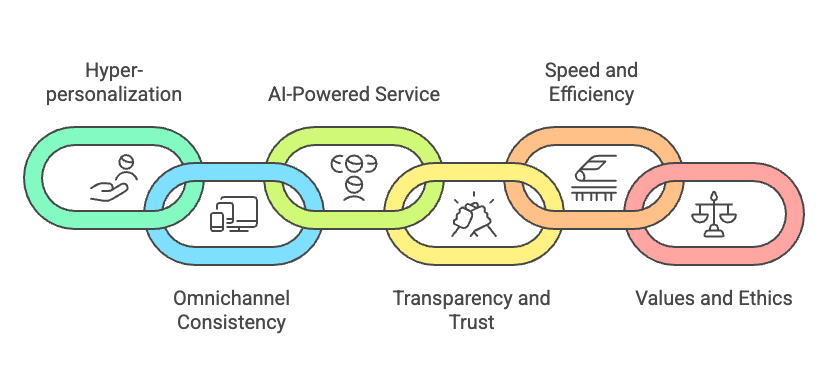
Let’s be clear: customer expectations in 2025 aren’t what they were even a few years ago. People want more — and they’re not afraid to move on if they don’t get it.
Here’s what they’re looking for:
- Hyper-personalization: Nearly 73% of customers expect more tailored experiences thanks to better tech, but 61% still feel like just another number. They want to be recognized, remembered, and treated like individuals.
- Omnichannel consistency: Whether it’s chat, email, or phone, 79% of people expect a smooth, unified experience across every touchpoint. And yet, more than half say it still feels like they’re talking to five different companies when they reach out.
- AI-powered, human-first service: Sure, people are embracing AI — 81% know it’s part of modern support. But when things get tricky? 70% of Gen Z still wants a real human to step in and help.
- Transparency and trust: With data privacy becoming more top-of-mind, 79% of customers are more protective of their information. But they’re also open — 71% are happy to share data if you’re clear about how you’ll use it.
- Speed and efficiency: People expect quick answers that actually solve their problems. Self-service is no longer just FAQs — it’s smart, personalized, and intuitive.
- Values and ethics: Customers are watching what companies stand for. Nearly 80% believe values-driven brands outperform, and 92% of millennials prefer to buy from companies they see as ethical.
Bottom line? Expectations are high — and rising. Every time a customer has an amazing experience somewhere else, your bar goes up too. Keeping pace with that isn’t just a “nice to have.” It’s survival.
7 Real-world customer service examples that actually make a difference
1. Chewy: Turning empathy into loyalty

Here's something you won't believe — when pet parents contact Chewy about returning food after losing their furry family member, they don't just get a refund. Chewy tells them to donate the food to a shelter, refunds their money, and often sends flowers with a handwritten note from the rep they spoke with. That's not just customer service — it's human connection at its finest.
How a refund turned into a lifelong customer
Anna Brose's story says it all. After her dog Gus died, she reached out to Chewy about returning some unused food. What happened next floored her — a complete refund, a suggestion to donate the food locally, and then flowers showing up at her door with a personal note from the representative. Her tweet about this experience racked up over 564,500 likes and 33,000 retweets, unleashing thousands of similar stories from other customers.
One person wrote: "Never in my life could I ever have imagined that I would be as deeply touched by the actions of a for-profit company, let alone an internet .com one, as I have been this week". Another customer shared how Chewy stepped in during a snowstorm, contacting UPS directly when prescription pet food was desperately needed.
These aren't one-off lucky breaks with exceptional employees. Chewy regularly surprises customers with:
- Condolence flowers when pets pass away
- Personalized oil paintings of customers' pets (over 1,000 sent weekly)
- Birthday cards for pets
- Anniversary notes celebrating when customers joined
- Small gifts based on conversations with service representatives
What makes this so remarkable? These gestures are actually built into Chewy's DNA — not just random acts of kindness.
Why small gestures matter
Small gestures create massive loyalty. Since day one, Chewy understood that "good experience builds loyalty". Their approach recognizes a simple truth — people treat pets like family members, making every interaction an emotional opportunity.
The numbers make sense too. Sure, sending flowers or hand-painted portraits costs money, but look at the return — Chewy grew from a billion-dollar company seven years ago to a $12 billion operation now serving 25% of North American households. Since going public in 2019, their revenue jumped from $4.85 billion to over $11 billion.
Their customer service philosophy just hits different:
Their 3,000-person care team answers 96% of calls within four seconds. Unlike most companies obsessed with quick call times, they empower reps to spend as long as needed with customers — sometimes even two full hours with a single pet parent.
They've discovered something powerful — "cohorts that have interacted with customer care have a higher lifetime value and longevity than other customers".
Why do these small gestures work so well? We're social creatures who crave authentic relationships. While most businesses fixate on sales targets, the winners build lasting connections through genuine care and thoughtfulness. One executive summed up Chewy's approach perfectly: "It's quite simple, actually. Allow the humans representing your brand to be human with your human customers".
The result? A defense against giants like Amazon and Walmart that neither can match: real human connection through empathy.
2. Amazon: Fast, simple, and customer-first

Amazon might be massive — over 200 million Prime members worldwide — but their success isn't accidental. The e-commerce giant has built an empire on one foundational principle: customer obsession.
How quick resolutions build trust
Customer obsession isn't just a catchy Amazon slogan — it's literally their first leadership principle: "Leaders start with the customer and work backwards. They work vigorously to earn and keep customer trust". This isn't PR fluff; it's their entire business approach.
Amazon collects mountains of customer data to create experiences that feel weirdly personal. They're constantly tracking what you click, buy, and browse to understand what you might want next — sometimes before you even know you want it.
When something goes wrong, Amazon makes fixing it ridiculously simple:
- Self-service options right on their Customer Service page
- 24/7 live chat with actual humans
- Phone support without the endless hold music
- Social teams ready to jump on your tweet
The goal? Make problem-solving feel effortless. And it works — 49% of consumers stay loyal to brands after positive service experiences. That first resolution sets the tone for your entire relationship with them.
The power of hassle-free returns
Nothing shows Amazon's customer-first mentality better than their returns process. While most retailers make returns feel like punishment, Amazon flips the script:
Most items can come back within 30 days with free shipping. Even better? Many returns don't even need boxes or labels — just bring your item to a drop-off spot with a QR code. These return options are within a 5-mile radius of most customers' homes.
Here's where they get really smart: for certain low-value returns, Amazon just says "keep it" while still giving you a full refund. Seems crazy at first, but it actually saves them processing costs while making you feel like you won the lottery.
This no-hassle approach creates loyal customers in droves. About 80% of shoppers pick Amazon specifically for the fast shipping and easy returns. A cold, robotic return process won't cut it anymore — Amazon has raised the bar for everyone else.
3. Zappos: Building loyalty through extreme service
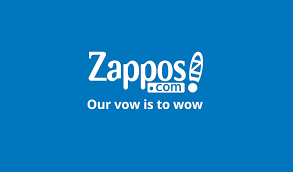
Think of it like this: most companies want to get you off the phone as quickly as possible. Zappos? They're happy to chat for nearly 11 hours straight. No joke — a routine shoe inquiry turned into a 10-hour and 43-minute conversation about life in Las Vegas, setting a record that perfectly captures their unique approach to service.
The 10-hour call that made history
When Steven Weinstein picked up what seemed like an ordinary customer call at Zappos headquarters, he had no idea he'd be setting a company record. After handling the initial request, they just kept talking. "The connection was so strong that we could have talked for 18 hours if we really wanted," Weinstein explained.
During this marathon conversation, Weinstein took just one bathroom break — about 2.5 hours in — while teammates brought him food and water. This call smashed the previous record of 9 hours and 37 minutes set back in 2012.
Here's what makes this truly different: Zappos doesn't measure call handling time like most places do. They expect agents to spend at least 80% of their time talking with customers, no matter how many calls that works out to. Their goal isn't quick fixes — it's creating genuine connections.
"It's more important that we make an emotional connection with the customer, rather than just quickly getting them off the phone," says Derek Carder, their Customer Loyalty Operations Manager. This approach has paid off big time — 75% of Zappos purchases now come from returning customers.
Why humor and flexibility work
Zappos gives their team freedom to ditch the scripts and use their best judgment. When a customer complained about shoes falling apart, a rep named Paul responded as "Captain Anomaly," a customer service superhero. With wit and personality, he solved the problem while making the customer smile — turning a potential negative into something memorable.
This freedom leads to some pretty amazing service moments:
- When a newlywed accidentally returned her purse with thousands in jewelry inside, a Zappos rep bought a plane ticket to hand-deliver it and ended up being invited to dinner by the grateful couple
- They've sent flowers to customers going through tough medical treatments
- They've delivered free shoes to a best man who showed up shoeless at a wedding
This isn't just about random acts of kindness. Zappos built their entire culture around service excellence. Their training program runs four weeks, covering company history and vision, plus two weeks taking actual customer calls. And get this — after the first week, they offer trainees $2,000 to quit, making sure only people who truly believe in their values stick around.
CEO Tony Hsieh often said Zappos was "a customer service company that happens to sell shoes." This mindset explains why Amazon paid $1.2 billion for them while letting Zappos keep their unique culture.
The lesson? In a world where most companies race to end calls quickly, slowing down to build real connections creates loyalty that fancy technology just can't match. When businesses treat customers as humans rather than transactions, everybody wins.
4. Trader Joe's: Empowering staff to delight
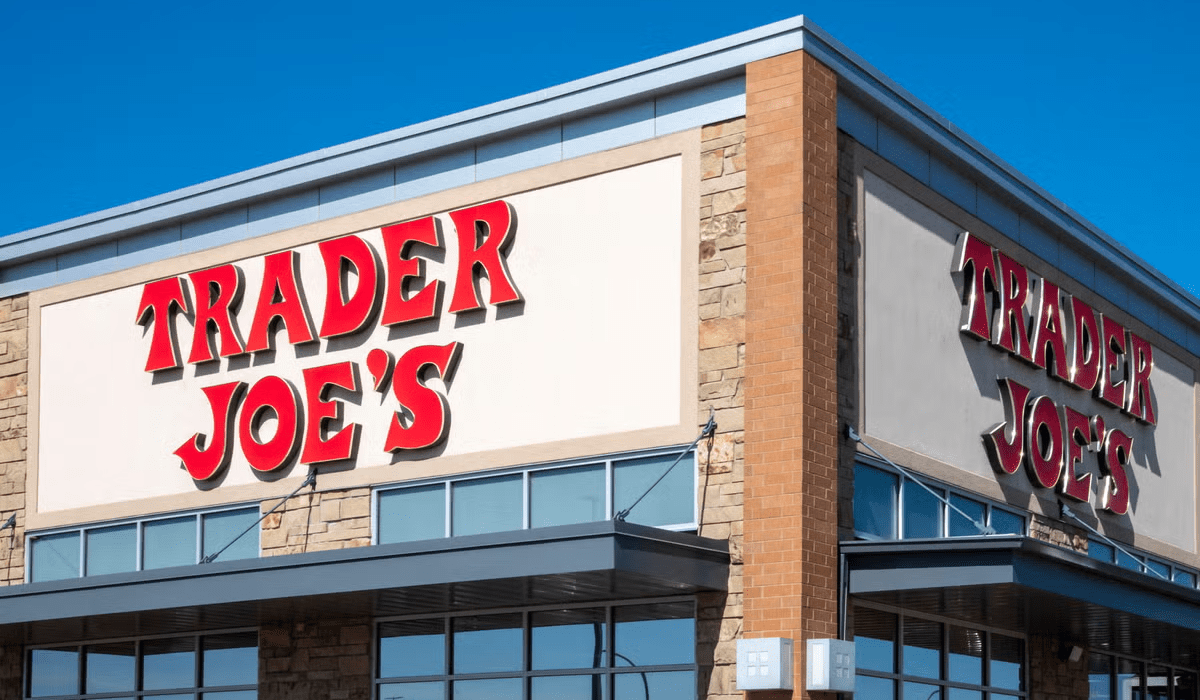
Ever wonder why Trader Joe's customers are so loyal? Here's the secret — they trust their people to do the right thing without running to a manager for every little decision. While other retailers chase tech solutions, Trader Joe's bets on something much simpler: human connections.
Think about that woman who got stuck in a snowstorm after shopping. Her car wouldn't start, and most stores would have offered a sympathetic "good luck!" Instead, a crew member jumped her car, then came back the next day with his mechanic friend to make sure everything was working right. That's not in any employee handbook — that's what happens when you trust your team to solve problems their way.
Trader Joe's doesn't waste time with scripted customer service lines. They hire people who actually enjoy helping others, then — and this is the key part — they get out of their way. Their core guidelines are refreshingly simple:
- Create WOW customer experiences
- Treat the store like it's your own business
- Make quick decisions with customers in mind
- Have fun while being passionate about your work
The proof is in the numbers. Their crew members stick around for 8+ years on average, while most retail workers bail after just 3. When employees feel trusted, everybody wins.
But here's what really makes Trader Joe's different — they don't just collect feedback, they actually use it. Those "Product Feedback" forms? They lead to real changes. The company gets about 4,000 customer suggestions every month and has rolled out 725 new products in the last two years based directly on what customers asked for.
Their podcast regularly mentions specific feedback that sparked new products. Remember those chocolate-covered wafer cookies that fly off the shelves? Those exist because customers kept asking for them.
No wonder they maintain a 94% customer satisfaction rate without spending a dime on ads. The lesson couldn't be clearer — when you treat employees like trusted partners instead of replaceable parts, they create experiences worth talking about. And word-of-mouth from happy customers? That's marketing you can't buy at any price.
5. Ritz-Carlton: Personalization at scale
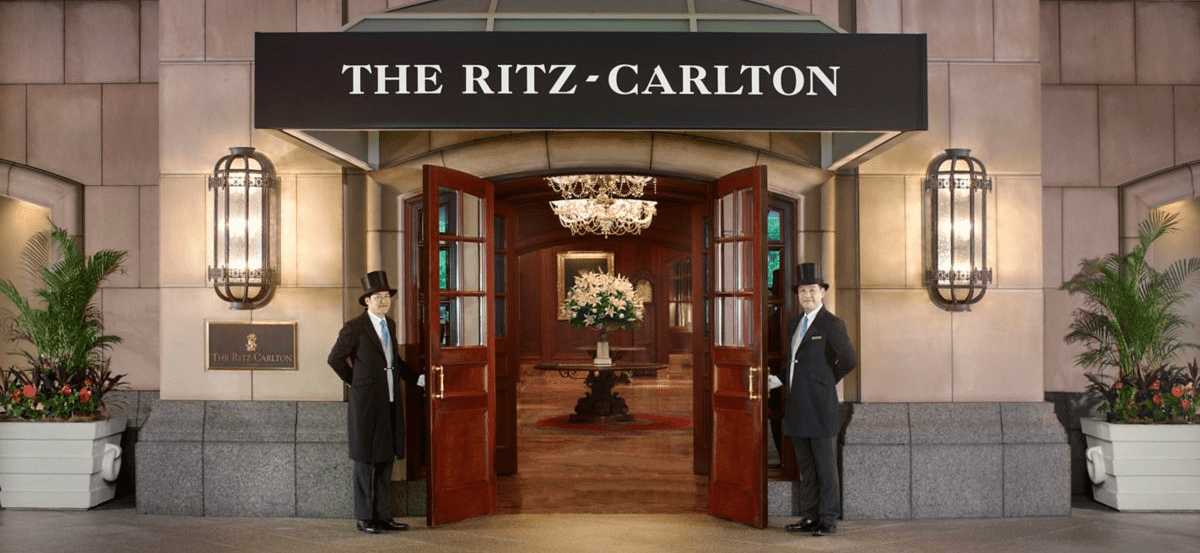
You know that feeling when someone remembers your coffee order without asking? Ritz-Carlton has turned that simple human moment into their entire business model. Their famous motto says it all: "We are ladies and gentlemen serving ladies and gentlemen." But what makes them special isn't just fancy talk—it's a system built to make every guest feel like the only guest.
Using data to anticipate guest needs
The magic behind Ritz-Carlton's service isn't just good training. It's their "Guest Preference Program," which tracks everything from your favorite pillow type to whether you prefer room temperature cool or warm. These details follow you to any Ritz-Carlton worldwide, so your second stay feels like coming home.
Here's what makes this approach different: when 82% of guests experienced this personalization, they reported dramatically higher satisfaction. And guests happily pay up to 15% more for these tailored experiences. The numbers don't lie—being remembered matters.
What truly sets Ritz-Carlton apart? Every single employee—yes, even housekeeping—can spend up to $2,000 per guest, per day to fix problems without asking a manager. Most companies freak out at the thought of giving staff this kind of freedom. But Ritz-Carlton understands something crucial: trust your people and they'll create those "unique, memorable and personal experiences" that build loyalty.
At their Half Moon Bay property, they've turned this personalization into direct revenue. Guests booking rooms get asked about spa preferences, then arrive to find custom spa menus featuring treatments matched to their interests. Small touch, big results.
The story of Joshie the giraffe
Nothing captures Ritz-Carlton's approach better than what happened with Joshie the giraffe. When Chris Hurn's family checked out of the Amelia Island property, they accidentally left behind their son's beloved stuffed animal. To calm his upset child, Chris made up a story that Joshie was simply "taking an extra vacation."
That night, the hotel called—they'd found Joshie. Chris explained his white lie, and jokingly asked if they might snap a quick photo of Joshie by the pool to back up his story.
What happened next? Pure customer service gold. Days later, a package arrived containing not just Joshie, but a full binder documenting his "extended stay". Photos showed Joshie lounging poolside with sunglasses, getting spa treatments, driving a golf cart on the beach, and even working a shift with the Loss Prevention Team—complete with his own employee ID badge.
This small gesture won them a customer for life. As Chris wrote afterward, "The Ritz-Carlton can count on my family to be repeat customers". His story went viral, proving once again that thoughtful touches create both emotional connections and powerful word-of-mouth advertising that no marketing budget can buy.
6. Warby Parker: Seamless try-on experience
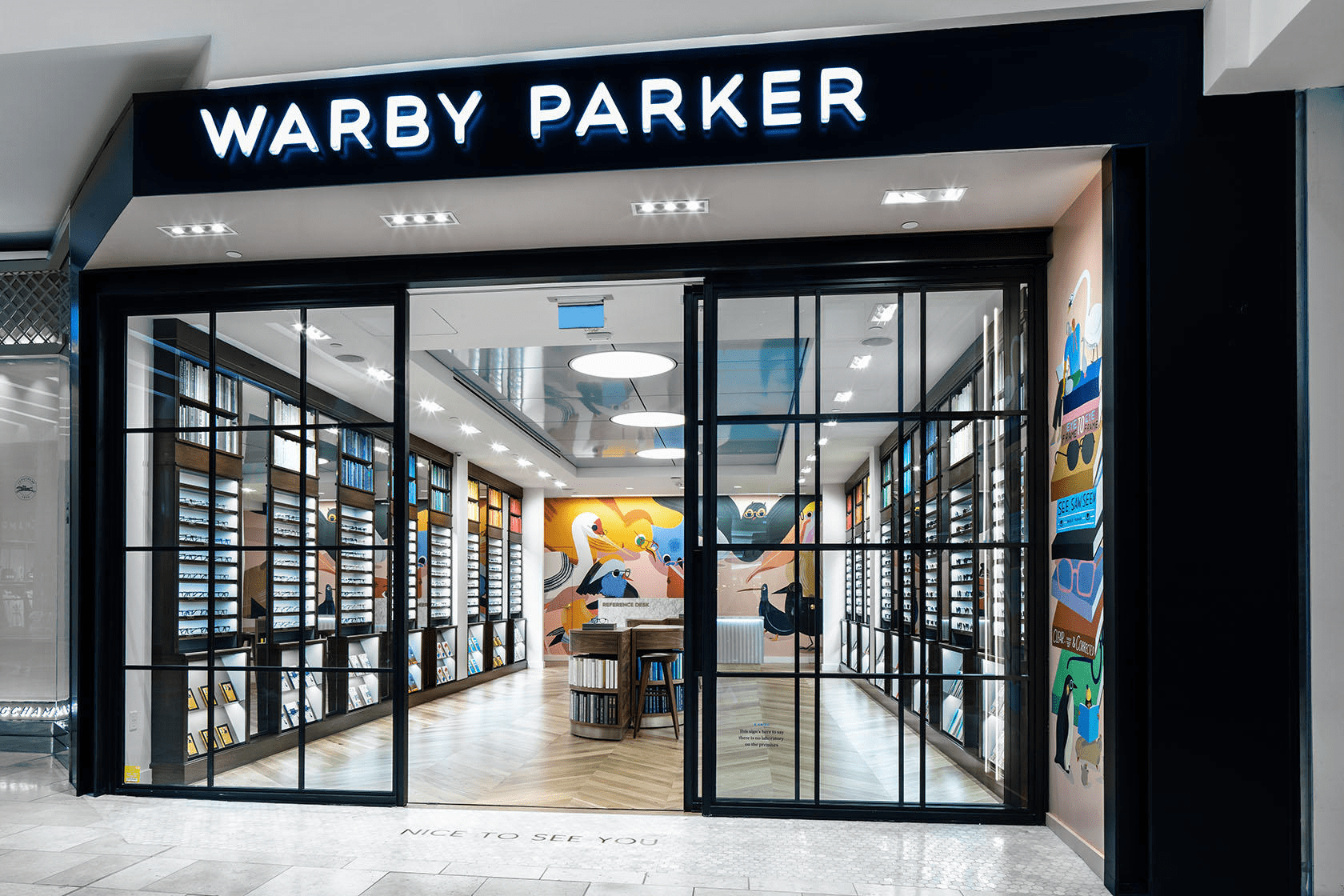
Warby Parker isn’t just selling glasses — they’ve reinvented what it feels like to shop for eyewear online. From the moment you land on their site to the day your frames arrive, every step is designed to feel simple, human, and oddly delightful.
Turning hesitation into confidence
Buying glasses online used to be a nonstarter. You couldn’t try them on, couldn’t feel the quality, couldn’t tell how they’d look on your face. Warby Parker changed that with their at-home try-on program. You pick five frames, they ship them to your door — no commitment, no pressure. It sounds simple now, but it was a game-changer.
Here’s the kicker: over 80% of customers who try frames at home go on to make a purchase. That’s not just good UX — it’s trust-building in action. And with free shipping both ways, the risk disappears. What you’re left with is confidence, which just so happens to be the #1 thing people actually want when choosing glasses.
Seamless returns, no stress
Warby Parker also nailed one of e-commerce’s trickiest pain points: returns. No hidden fees. No begging for a refund. Just a clean, easy process that shows they value your time and your trust. According to internal data, customers who go through a smooth return are 3x more likely to come back and buy again. That’s not a glitch — that’s smart service design.
And unlike many e-commerce brands, their support isn’t buried behind ten menus or faceless bots. When you need help, you get a real human, fast. The kind who actually wants to solve your problem, not just close a ticket.
Small gestures that feel big
What really sets Warby Parker apart is how they handle those in-between moments — the little emails checking in on how your try-ons are going, the hand-signed notes that sometimes show up in your box, the friendly follow-ups when you seem stuck.
One customer shared how, after their glasses broke right before a job interview, Warby Parker overnighted a replacement pair at no cost — and added a good luck note in the package. It wasn’t just about glasses anymore. It was about someone on the other end who actually cared.
The takeaway?
Warby Parker proves you don’t need a luxury hotel to offer luxury-level service. With thoughtful design, human-first systems, and a little empathy, even a digital brand can create moments that stick. They’ve turned what used to be a chore — buying glasses — into something people rave about. And in e-commerce, that’s no small feat.
7. USAA: Innovation from the inside out
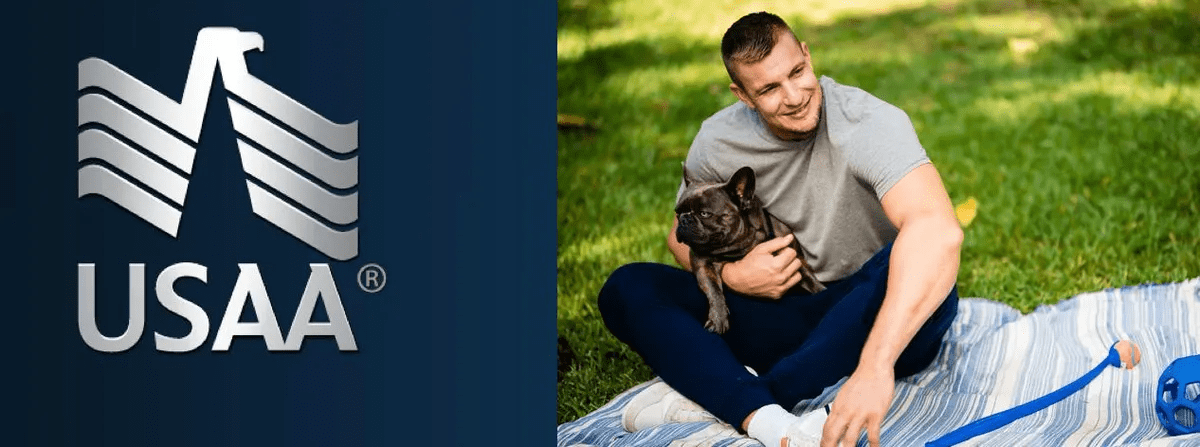
Think of it like this: if your customer service is only as good as your employees' experience, USAA has figured out the magic formula. For over 100 years, this financial giant has built a culture where customer service improvements start with the 38,000 people who work there — not with fancy consultants or outside experts.
How employees drive customer-focused ideas
The numbers here are pretty mind-blowing. USAA employees submit 10,000 ideas every year, with 897 of those turning into actual U.S. patents. In one case, a security guard — not an executive or tech wizard — came up with 25 fully realized patents that improved customer experience. That first spark of innovation often comes from the most unexpected places.
USAA doesn't just hope for good ideas — they've built multiple channels to capture them:
- An "Always On Ideas Platform" where any employee can submit thoughts
- Business challenges that invite staff to solve specific problems
- Eight-week competitions held during lunch breaks
- Quick hackathons that tackle problems in just a day or two
They make innovation feel rewarding, too. Your name gets displayed on their Patent Tree wall if your idea makes it, and hackathon winners receive actual cash prizes. USAA totally gets that recognition matters as much as the paycheck sometimes.
Why internal culture shapes external service
Here's where USAA really stands out — they don't just talk about understanding customers, they make sure employees live it. Every new hire becomes a USAA member during onboarding, so they experience the company's services firsthand. And if that wasn't enough, new employees go through military-life training — eating actual MREs and drilling with retired sergeants — to truly understand their military customers.
The results speak for themselves. USAA ranked #1 in J.D. Power's 2024 customer satisfaction study, and KPMG named them the top provider of stellar customer experiences in the country.
This connection between employee experience and customer satisfaction isn't just feel-good corporate talk. Research shows companies with strong cultural values see a 65% boost in customer satisfaction and 25% jump in profits. When USAA first implemented generative AI, they used it to analyze employee feedback from internal Slack channels — focusing first on understanding staff needs before jumping to customer-facing applications.
The lesson here is crystal clear: exceptional customer service starts with how you treat the people who deliver it.
Final thoughts
At the end of the day, customer service examples like the ones we’ve explored aren’t just feel-good stories — they’re powerful proof that thoughtful, human-centered service drives real business results. Whether it’s Warby Parker’s frictionless try-on process or Ritz-Carlton’s personalized attention, these examples show how great service creates lasting loyalty and sets brands apart in crowded markets.
These customer service examples remind us that it’s not about flashy gimmicks, but about understanding what customers truly need and delivering it with care and consistency. When businesses focus on real connections and seamless experiences, customers notice—and they come back again and again.
If you want your business to thrive, look closely at these customer service examples and ask yourself: How can you make your customer’s journey easier, more personal, and more memorable? Because in 2025 and beyond, excellent customer service isn’t optional — it’s the difference between standing out and falling behind.
So take these customer service examples as inspiration. Use them to craft your own unique approach that turns first-time buyers into lifelong advocates. After all, great customer service is the best kind of marketing there is.
Quick summary: Outstanding customer service examples: How top brands win customer loyalty
In today's competitive marketplace, exceptional customer service has become the ultimate differentiator. With 62% of consumers feeling undervalued by businesses, companies that prioritize genuine care stand out dramatically.
This article explores remarkable customer service examples from industry leaders that transform everyday interactions into powerful loyalty drivers:
- Chewy's empathetic approach, sending flowers after pet deaths
- Amazon's hassle-free return policy that puts customers first
- Zappos' famous 11-hour customer service call
- Trader Joe's employee empowerment model
- Ritz-Carlton's $2,000 problem-solving authority
- Warby Parker's innovative home try-on program
- USAA's employee-driven innovation culture
These customer service examples demonstrate that success comes from understanding fundamental customer desires: to feel valued, heard, and respected. The best customer service examples don't just solve problems—they create memorable experiences that customers eagerly share.
As customer expectations continue rising in 2025, these inspiring customer service examples provide a blueprint for any business seeking to differentiate through exceptional care. Remember: in an increasingly crowded marketplace, how you treat your customers might be your most powerful competitive advantage.
Frequently Asked Questions
Speed, empathy, personalization, and problem-solving. Customers remember how you made them feel, especially if you solved their issue quickly or went the extra mile when they didn’t expect it.
5 important customer service qualities are:
- Empathy (Understand and relate to the customer’s feelings.)
- Clear Communication (Explain things simply and avoid confusion.)
- Patience (Stay calm, even with frustrated customers.)
- Problem-Solving (Quickly find smart, effective solutions)
- Product Knowledge (Know your product well to help confidently.)
An example of excellent customer service is following up after resolving a customer’s issue.
It shows the company cares about the customer’s experience, not just closing tickets.
This extra step builds trust and long-term loyalty.
"That's our policy."
Sounds dismissive; offers no real help or flexibility.
"I don't know."
Shows lack of knowledge—say "Let me find out for you" instead.
"Calm down."
Can escalate tension; try empathy instead.
"It’s not my fault."
Shifts blame—customers care about solutions, not excuses.
"There’s nothing I can do."
Shuts down the conversation; always explore alternatives.
Yes — but the core principles are the same: solve problems quickly, treat people with respect, and personalize the experience. Whether it’s e-commerce, hospitality, or tech, great service is always about making customers feel valued.
